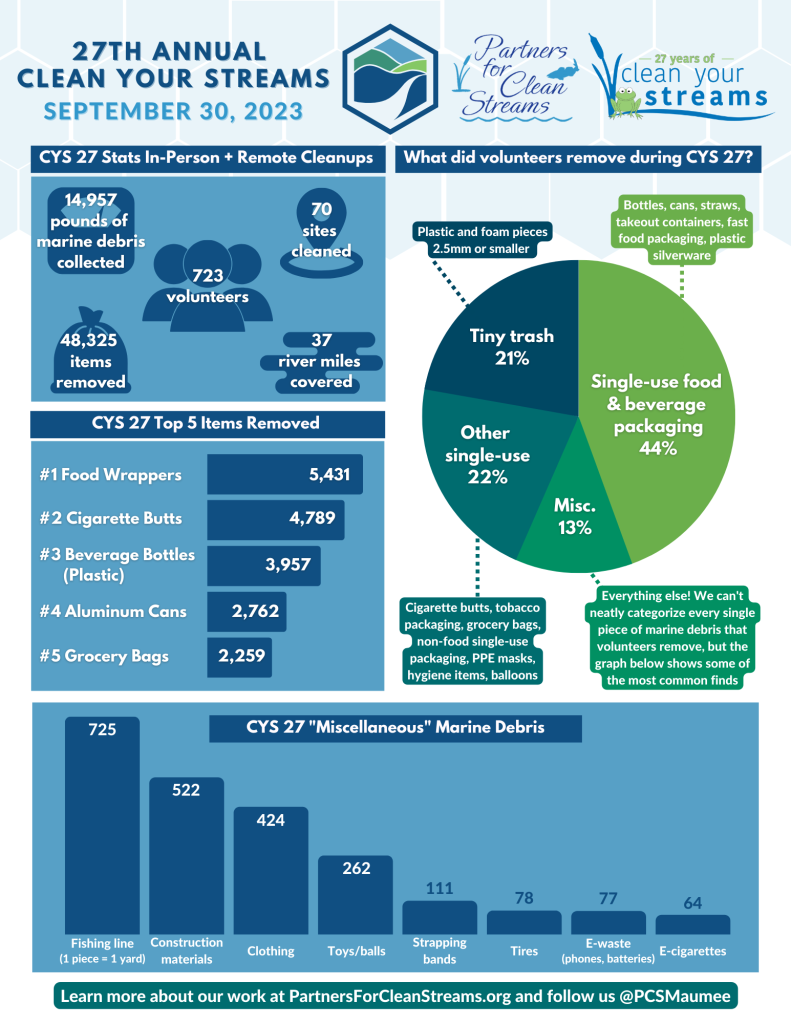We are so excited that the 28th Annual Clean Your Streams Day is almost here! The work done on this day is important, but so is the educational piece. Read on to learn about the beginnings of marine debris.

Most of the trash in our Great Lakes doesn’t originate from boats. Marine debris begins on land and can travel vast distances through wind, storm drains, and interconnected waterways.
Where Does Marine Debris Start?
- Overflowing Bins: Garbage and recycling bins can overflow or spill if trash is unbagged, bags aren’t tied, or bins are uncovered.
- Pedestrian Litter: Trash discarded by pedestrians often accumulates near fast food outlets, convenience stores, public transit stops, and outdoor events.
- Vehicle Waste: Trash can blow out of garbage trucks, uncovered truck beds, or be deliberately discarded at freeway on/off ramps.
- Illegal Dumping: Unfortunately, illegal dumping on land or into waterways still occurs.
How Does Trash Travel?
- Storm Drains: Trash can enter storm drains from rain or wind and then flow into local creeks and rivers.
- Direct Flow: Trash may blow or flow directly into ditches or creeks.
- Waterway Connections: Smaller waterways transport trash to larger rivers, eventually reaching Lake Erie.
We frequently discover lightweight items easily carried by the elements. In recent years, single-use plastic items, particularly food and beverage packaging, have become increasingly common. Check out the infographic above for a detailed breakdown of last year’s findings from the 27th Annual Clean Your Streams Day.
